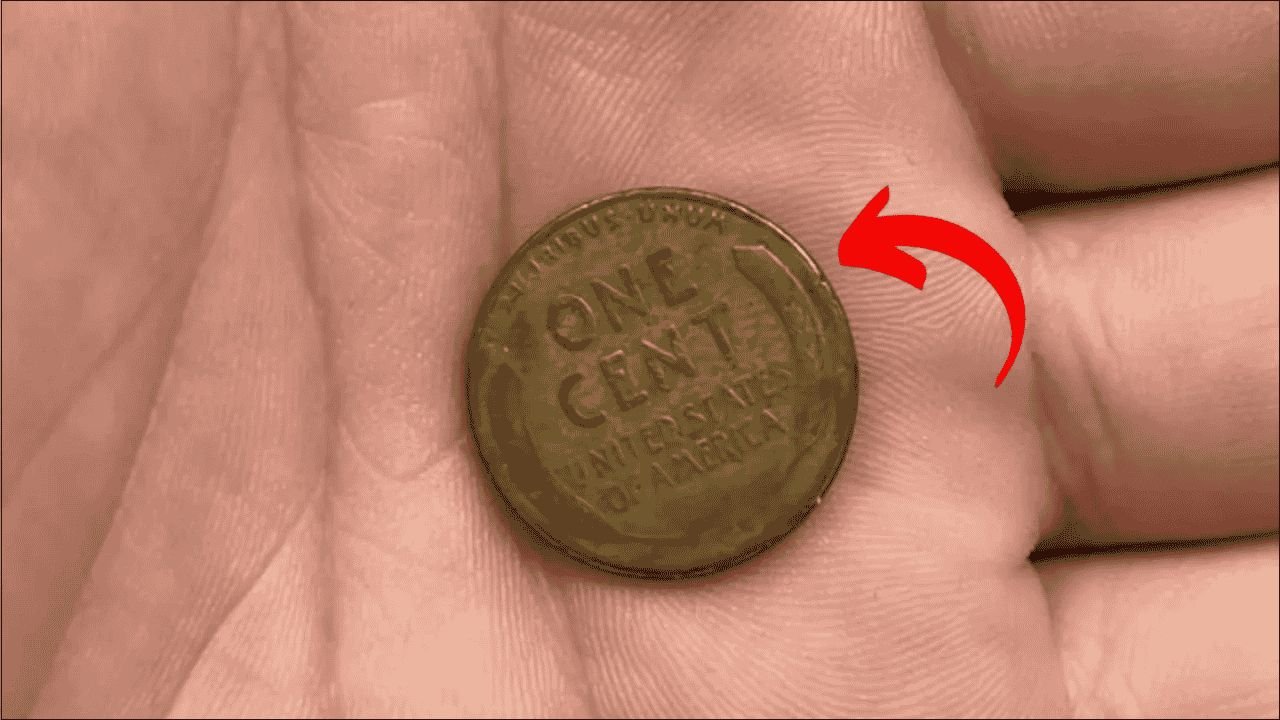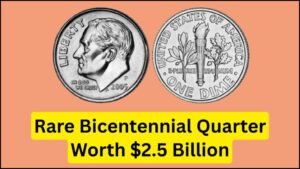The Lincoln Wheat Penny, a humble coin minted between 1909 and 1958, has sparked a modern-day treasure hunt across America.
One rare variant, the 1943 copper penny, has collectors and casual coin-checkers alike dreaming of striking it rich. This isn’t just pocket change—it’s a piece of history that could change your life. Let’s dive into the thrilling tale of this numismatic gem, why it’s so valuable, and how you might spot one in your spare change.
The Fascinating History of the Lincoln Wheat Penny
A Coin Born from a Centennial Celebration
In 1909, the United States was buzzing with pride as it celebrated the 100th anniversary of Abraham Lincoln’s birth. The U.S. Mint decided to honor the beloved president by featuring his likeness on a coin—a first for American currency, which had previously showcased symbolic figures like Lady Liberty.
Sculptor Victor David Brenner crafted the iconic design: Lincoln’s dignified profile on the front (obverse) and two wheat stalks framing “ONE CENT” on the back (reverse), giving the coin its nickname, the “Wheat Penny.” This design ran for nearly five decades, becoming a staple in American wallets and a witness to history, from the Great Depression to World War II.
Why the 1943 Copper Penny Is a Numismatic Unicorn
The real magic of the Lincoln Wheat Penny lies in a wartime fluke. During World War II, copper was critical for military supplies like ammunition and wiring. To conserve this precious resource, the U.S. Mint switched to zinc-coated steel for pennies in 1943. But—plot twist!—a few copper planchets (blank coin discs) from 1942 were accidentally left in the minting presses.
These were struck with 1943 dies, creating a tiny batch of copper pennies that were never meant to exist. With only an estimated 15-20 authentic specimens known across the Philadelphia, Denver, and San Francisco mints, these coins are among the rarest in American history. One such penny fetched a jaw-dropping $5.5 million at a 2024 auction, cementing its status as a collector’s holy grail.
What Makes This Penny Worth $5.5 Million?
The Perfect Storm of Rarity and History
The 1943 copper penny’s value comes from a trifecta of factors:
- Extreme Rarity: With fewer than two dozen confirmed examples, these coins are scarcer than a unicorn in Times Square. Their limited number drives fierce competition among collectors.
- Historical Significance: Minted during World War II, these coins are tangible relics of a time when America rallied for victory, making every penny a piece of wartime lore.
- Minting Error: The accidental use of copper planchets in a steel-penny year makes these coins a numismatic anomaly, coveted for their uniqueness.
Add to that the coin’s condition—pristine, uncirculated specimens command the highest prices—and you’ve got a recipe for a multi-million-dollar treasure.
Other Valuable Wheat Pennies to Watch For
While the 1943 copper penny steals the spotlight, other Lincoln Wheat Pennies can also fetch impressive sums. Here are a few to keep an eye out for:
| Year | Variety | Estimated Value | Why It’s Valuable |
|---|---|---|---|
| 1909-S VDB | Initials on Reverse | Up to $100,000 | Low mintage (484,000) due to public backlash over designer’s initials. |
| 1914-D | Denver Mint | Up to $25,000 | Scarce due to low production numbers. |
| 1922 No D | Missing Mint Mark | Up to $15,000 | Error coin with no Denver mint mark. |
| 1955 Doubled Die | Doubled Lettering | Up to $10,000 | Visible doubling in date and text due to minting error. |
These coins, while not in the $5.5 million league, can still turn a lucky find into a windfall.
How to Spot a $5.5 Million Penny
The Magnet Test and Other Tricks
Think you’ve got a 1943 copper penny? Here’s how to check without breaking the bank:
- Date and Color: Look for a 1943 penny with a copper hue, not the silvery steel typical of that year.
- Magnet Test: Steel pennies stick to a magnet; the rare copper ones don’t.
- Weight Check: Authentic 1943 copper pennies weigh about 3.11 grams, while steel ones are lighter at 2.7 grams.
- Mint Mark: Check for a “D” (Denver), “S” (San Francisco), or no mark (Philadelphia) under the date. The 1943-D is the rarest.
Beware of fakes! Some scammers plate steel pennies with copper or alter 1948 pennies to look like 1943s. Professional authentication by services like PCGS or NGC is a must for suspected treasures.
Where to Find These Hidden Gems
The idea that a $5.5 million penny could be hiding in your change jar is what fuels this treasure hunt. These coins have turned up in surprising places:
- Pocket Change: Coins from old collections sometimes re-enter circulation.
- Bank Rolls: Buying rolls of pennies from banks can yield surprises.
- Estate Sales: Inherited coin stashes are prime hunting grounds.
- Coin-Counting Machines: These process millions of pennies daily, occasionally spitting out a rare find.
One famous 1943 copper penny was found by a teenager in his lunch change in the 1940s, later selling for hundreds of thousands. The dream is real!
Preserving Your Potential Fortune
Handle with Care
If you suspect you’ve found a valuable penny, treat it like a museum artifact:
- Don’t Clean It: Cleaning removes the natural patina collectors love, slashing the coin’s value.
- Handle by Edges: Use cotton gloves or hold only the edges to avoid oil damage.
- Store Safely: Use non-PVC coin holders and store in a cool, dry place to prevent tarnishing.
- Get It Graded: Professional grading services authenticate and assess condition, boosting market value.
Proper care ensures your penny stays pristine, maximizing its worth if it’s the real deal.
Why the Lincoln Wheat Penny Captivates Us
The allure of the $5.5 million Lincoln Wheat Penny goes beyond its monetary value. It’s a time capsule from a pivotal era, a testament to human error, and a spark for the imagination. The idea that a fortune could be hiding in a forgotten jar or a handful of change turns everyday moments into potential adventures. Coin collecting, or numismatics, isn’t just for experts—it’s a hobby that invites everyone to look closer at the small things in life. Whether you’re a seasoned collector or just curious, the thrill of the hunt makes every penny a story waiting to be told.
Conclusion: Your Next Penny Could Be a Game-Changer
The Lincoln Wheat Penny valued at $5.5 million isn’t just a coin—it’s a reminder that treasures can hide in the most ordinary places. From its wartime origins to its staggering auction prices, this penny has transformed pocket change into a nationwide treasure hunt. Next time you get a handful of coins, take a second to check those dates and colors.
Who knows? You might just find a piece of history worth millions. So, grab that change jar, channel your inner treasure hunter, and start searching—your fortune could be just a penny away!
FAQ: Your Questions About the $5.5 Million Penny Answered
How can I tell if my 1943 penny is the valuable copper version?
Use a magnet: if it doesn’t stick, it’s likely copper. Check the weight (3.11 grams) and have it authenticated by a professional grading service like PCGS or NGC.
Are all Lincoln Wheat Pennies valuable?
Most are worth just a few cents, but rare variants like the 1943 copper penny, 1909-S VDB, or 1955 Doubled Die can fetch thousands or millions, depending on condition.
Where are the best places to find rare pennies?
Check pocket change, bank rolls, estate sales, or old coin collections. Coin shows and online marketplaces like eBay are also great, but verify authenticity.
Will cleaning my penny increase its value?
No! Cleaning damages the coin’s surface and reduces its value. Collectors prefer coins with their original patina.
Is it legal to keep a rare penny I find?
Yes, it’s legal to keep and sell any rare pennies you find in circulation or collections.




